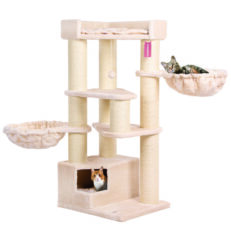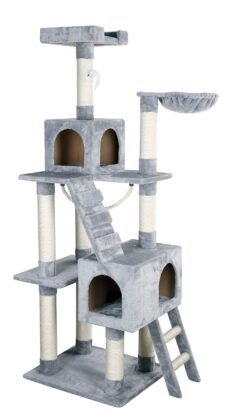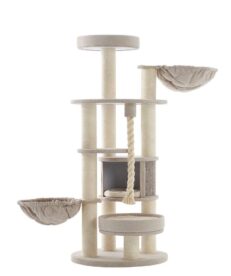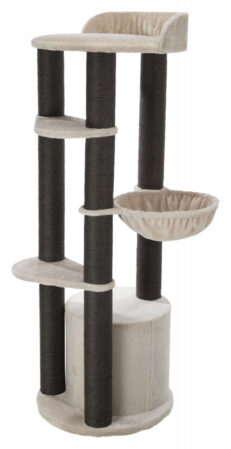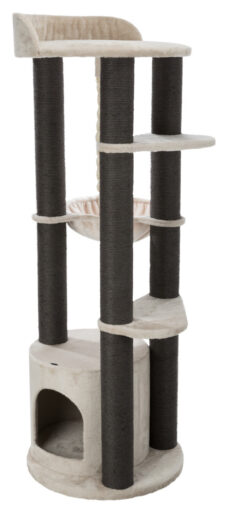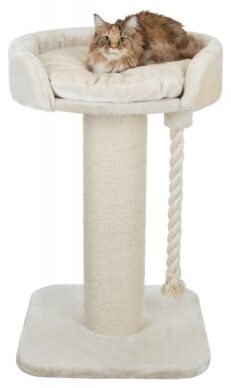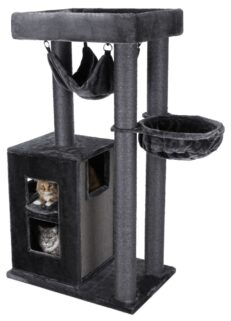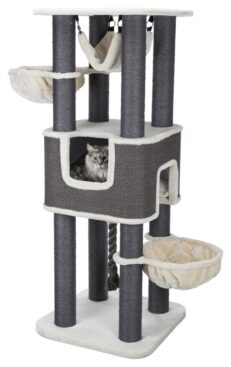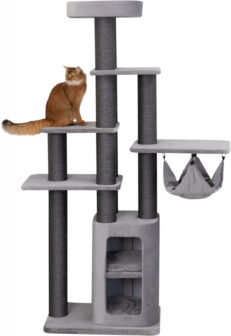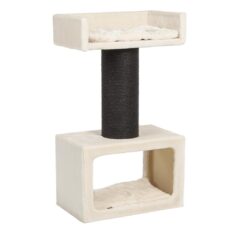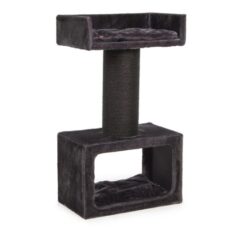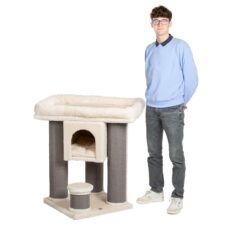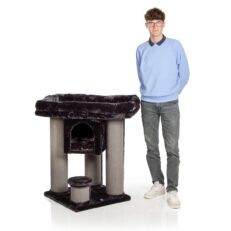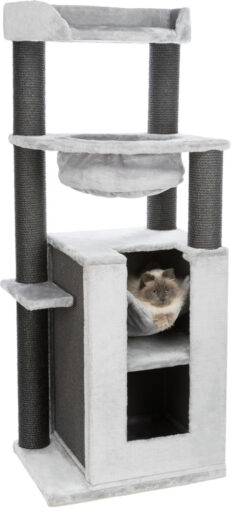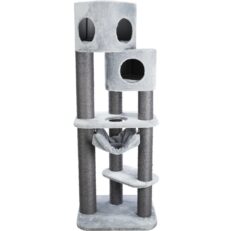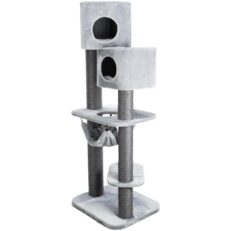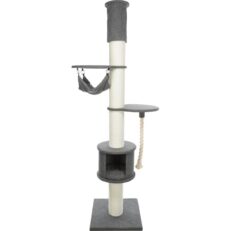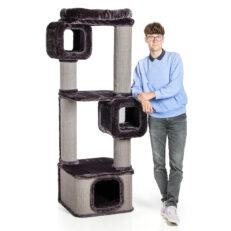The Importance of Safety in Cat Trees for Maine Coons
For owners of Maine Coon cats, providing a safe environment is just as important as ensuring their happiness and health. Given the unique physical attributes of Maine Coons, the need for sturdier and safer cat trees becomes evident. Understanding the specific ‘Maine Coon Safety’ requirements is crucial when selecting the right cat tree for these large and active felines.
Special Needs of Maine Coons
Maine Coons are significantly larger and heavier than the average domestic cat, with males often weighing up to 18 pounds or more. This considerable size, combined with their active nature, necessitates ‘Secure Cat Trees’ designed to withstand their weight and vigor. The stability of the cat tree is a paramount concern. A well-built cat tree for a Maine Coon should have a robust and broad base, strong supporting poles, and spacious platforms that can comfortably hold the cat’s weight.
Risks of Inadequate Cat Trees
Using cat trees that are not designed for larger breeds like Maine Coons can pose several risks. There is the danger of the tree tipping or breaking, which can lead to injuries. An unstable tree may wobble or collapse under the weight of a Maine Coon, potentially causing harm to the cat or even to people nearby. Furthermore, small or cramped perches and platforms can be uncomfortable for a larger cat, discouraging them from using the tree and depriving them of a crucial outlet for their natural climbing and perching instincts.
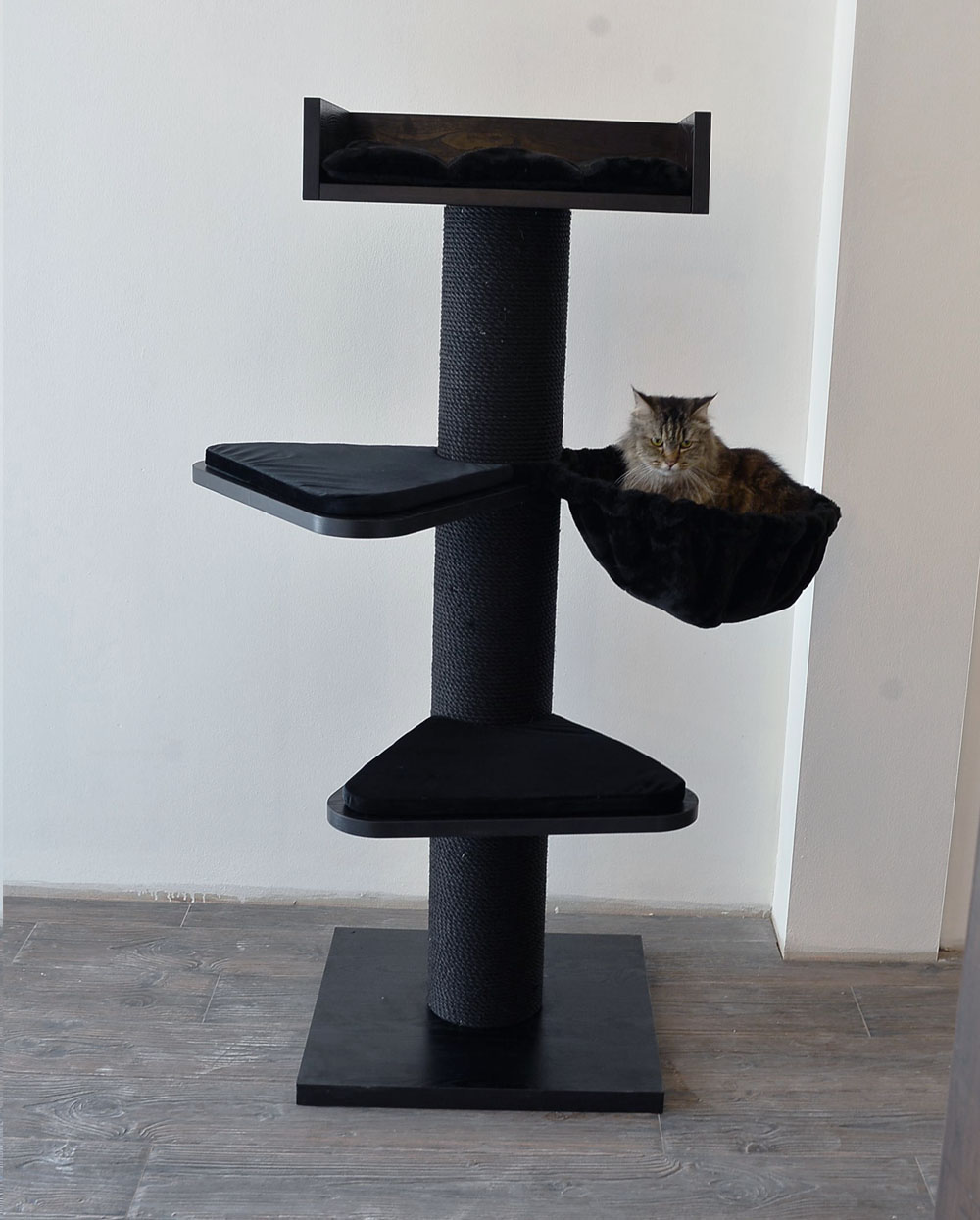
When selecting a cat tree for a Maine Coon, it’s crucial to consider factors like size, weight capacity, stability, and material quality. This chapter focuses on the features that make a cat tree safe and suitable for large breeds like Maine Coons, using keywords such as ‘Cat Tree Weight Capacity’, ‘Large Breed Cat Trees’, and ‘Sturdy Cat Furniture’.
Size and Weight Capacity
Maine Coons, due to their larger size and weight, require cat trees that are specifically designed to accommodate their physical characteristics. The ‘Cat Tree Weight Capacity’ should be a primary consideration. A suitable cat tree for a Maine Coon should have a high weight capacity to comfortably support the cat’s weight without any risk of tipping or breaking.
The platforms and perches of the cat tree should be spacious enough to allow the Maine Coon to lounge and stretch out comfortably. Smaller platforms not only can be uncomfortable but also may pose a risk of injury if the cat cannot balance properly.
Stability and Material Quality
Stability is paramount in ‘Large Breed Cat Trees’. A stable base is essential to prevent the cat tree from tipping over, especially when the cat jumps on or off. The base should be wide and heavy, providing a solid foundation.
Material quality also plays a significant role in the durability and safety of the cat tree. ‘Sturdy Cat Furniture‘ should be made from high-quality, durable materials that can withstand the wear and tear of a large cat climbing and scratching. Solid wood or heavy-duty particle board are good options for strength and longevity. The covering material, like carpet or faux fur, should be securely attached to prevent any pieces from coming loose and posing a choking hazard.
XXL Tomás Scratching Post
The Klara XXL (Cream)
The Amadeus
The Humberto XXL
The Cesare Cat Tree
The Cavell Scratching Post (Cream)
The Cavell Scratching Post (Blackline)
The Calgary Cat Tree (Cream)
The Calgary Cat Tree (Anthracite)
Leandro XXL
The Maine Pirro cat tree
The Fidelist
Regular Maintenance and Inspection of Cat Trees
Maintenance Tips
Regular maintenance of your Maine Coon’s cat tree is crucial to ensure its longevity and safety. Start by conducting weekly inspections to check for any loose components, such as screws or nails, and tighten them as needed. It’s also important to regularly clean the cat tree to remove fur, dust, and potential allergens. Vacuuming the surfaces and wiping down any non-fabric parts with a damp cloth can keep the tree hygienic. If the tree has removable fabric components, follow the manufacturer’s instructions for washing. Additionally, check for any frayed or loose parts of the scratching posts and repair or replace them if necessary. This not only keeps the tree safe but also encourages your cat to keep using it.
Signs of Wear and Tear
Be on the lookout for signs of wear and tear, which can be common, especially with a large breed like the Maine Coon. These signs include:
- Loose or wobbly platforms and perches.
- Torn fabric or heavily frayed scratching posts.
- Visible damage to the base or support structures.
- Any sharp edges or exposed nails/screws that could harm your cat.
If these signs are evident, it’s time to consider repairing or even replacing the cat tree to ensure your pet’s safety and enjoyment.
Safety Checklist
Performing periodic safety inspections on the cat tree is vital. Here’s a checklist to guide you:
- Stability Check: Ensure the tree is stable and doesn’t wobble. Check the base and all supporting structures.
- Component Tightness: Tighten any loose screws, bolts, or fixtures.
- Scratching Post Inspection: Look for excessive wear and ensure the posts are securely attached.
- Fabric and Cushion Safety: Check for tears or breaks in the fabric. Remove any loose threads or materials that could be ingested.
- Overall Cleanliness: Keep the tree clean from dirt, debris, and cat hair.
- Inspect for Modifications: If any modifications were made, ensure they are secure and safe.
Regular maintenance and inspections are key to providing a safe and enjoyable environment for your Maine Coon. By following these tips and being proactive about upkeep, you can extend the life of your cat tree and ensure it remains a beloved part of your cat’s daily routine.

